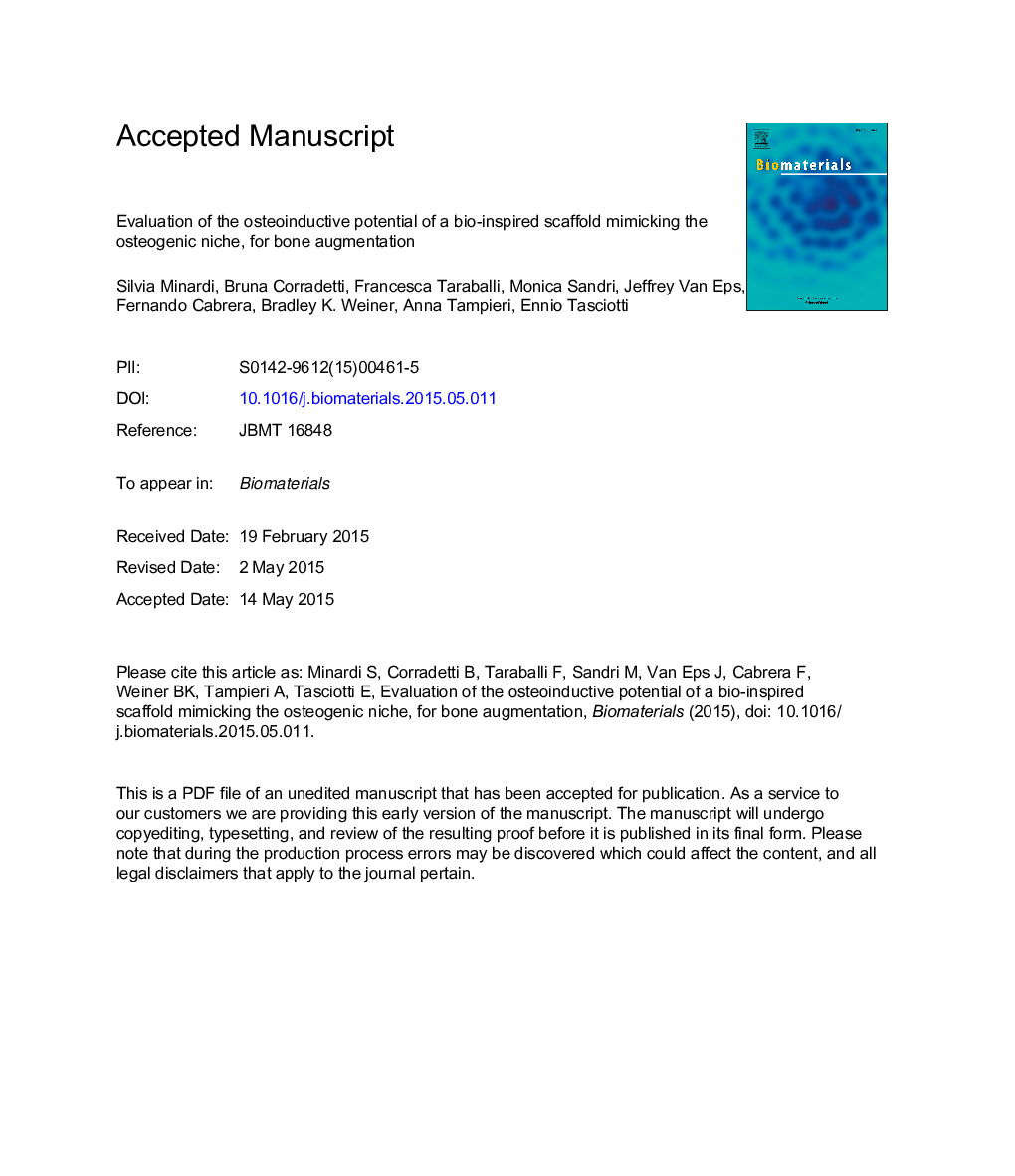| Article ID | Journal | Published Year | Pages | File Type |
|---|---|---|---|---|
| 6485538 | Biomaterials | 2015 | 33 Pages |
Abstract
Augmentation of regenerative osteogenesis represents a premier clinical need, as hundreds of thousands of patients are left with insufficient healing of bony defects related to a host of insults ranging from congenital abnormalities to traumatic injury to surgically-induced deficits. A synthetic material that closely mimics the composition and structure of the human osteogenic niche represents great potential to successfully address this high demand. In this study, a magnesium-doped hydroxyapatite/type I collagen scaffold was fabricated through a biologically-inspired mineralization process and designed to mimic human trabecular bone. The composition of the scaffold was fully characterized by XRD, FTIR, ICP and TGA, and compared to human bone. Also, the scaffold microstructure was evaluated by SEM, while its nano-structure and nano-mechanical properties were evaluated by AFM. Human bone marrow-derived mesenchymal stem cells were used to test the in vitro capability of the scaffold to promote osteogenic differentiation. The cell/scaffold constructs were cultured up to 7 days and the adhesion, organization and proliferation of the cells were evaluated. The ability of the scaffold to induce osteogenic differentiation of the cells was assessed over 3 weeks and the correlate gene expression for classic genes of osteogenesis was assessed. Finally, when tested in an ectopic model in rabbit, the scaffold produced a large volume of trabecular bone in only two weeks, that subsequently underwent maturation over time as expected, with increased mature cortical bone formation, supporting its ability to promote bone regeneration in clinically-relevant scenarios. Altogether, these results confirm a high level of structural mimicry by the scaffold to the composition and structure of human osteogenic niche that translated to faster and more efficient osteoinduction in vivo - features that suggest such a biomaterial may have great utility in future clinical applications where bone regeneration is required.
Related Topics
Physical Sciences and Engineering
Chemical Engineering
Bioengineering
Authors
Silvia Minardi, Bruna Corradetti, Francesca Taraballi, Monica Sandri, Jeffrey Van Eps, Fernando J. Cabrera, Bradley K. Weiner, Anna Tampieri, Ennio Tasciotti,
